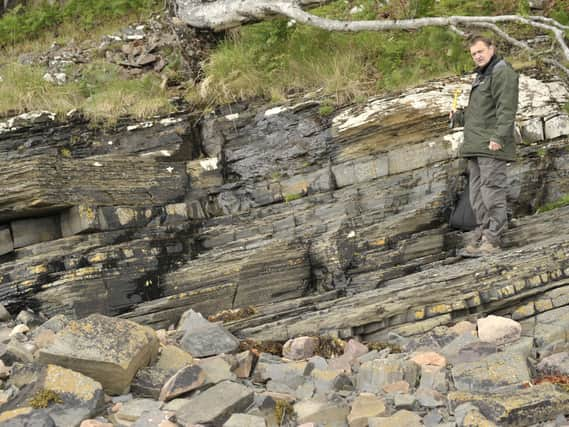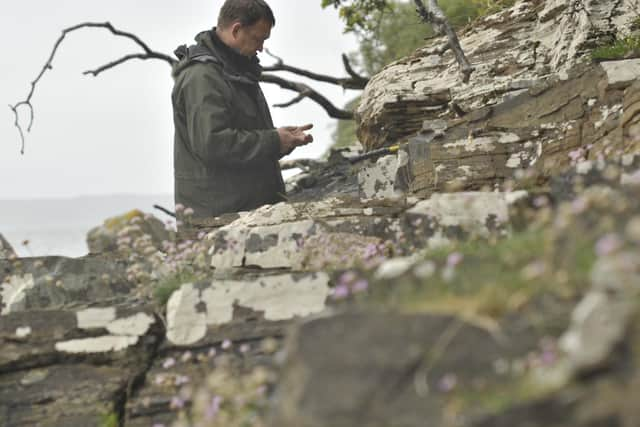Billion-year-old fossil found by University of Sheffield scientists 'solves' missing evolutionary link


The fossil was found at Loch Torridon in the Northwest Scottish Highlands and has two distinct cell types which scientists say could be the earliest multicellular animal ever recorded.
The groundbreaking discovery was made by team of scientists from the University of Sheffield in the UK and Boston College in the USA.
Advertisement
Hide AdAdvertisement
Hide AdScientists say the fossil, named Bicellum Brasieri, reveals the evolution of animals occurred at least one billion years ago and may have occurred in freshwater lakes rather than the ocean.


Professor Charles Wellman, one of the lead investigators of the research, from the University of Sheffield, said: "The origins of complex multicellularity and the origin of animals are considered two of the most important events in the history of life on Earth, our discovery sheds new light on both of these."
The fossil also shows new insight into the change of single celled organisms to complex multicellular animals.
Modern single celled holozoa include the most basal living animals, the fossil discovered shows an organism which lies somewhere between single cell and multicellular animals.


Advertisement
Hide AdAdvertisement
Hide Ad"We have found a primitive spherical organism made up of an arrangement of two distinct cell types, the first step towards a complex multicellular structure, something which has never been described before in the fossil record," Professor Wellman from the Department of Animal and Plant Sciences, said.
Scientists were able to study the fossil due to its "exceptional" preservation, allowing them to analyse it at a cellular and subcellular level.
For the future the team aims to examine the Torridonian deposits for more interesting fossils which could provide more insight into the evolution of multicellular organisms.
Professor Paul Strother, lead investigator of the research from Boston College, said: “Biologists have speculated that the origin of animals included the incorporation and repurposing of prior genes that had evolved earlier in unicellular organisms.
Advertisement
Hide AdAdvertisement
Hide Ad“What we see in Bicellum is an example of such a genetic system, involving cell-cell adhesion and cell differentiation that may have been incorporated into the animal genome half a billion years later.”
The fossil has been formally named Bicellum Brasieri in a new research paper published in Current Biology.
__________
Support The Yorkshire Post and become a subscriber today.
Your subscription will help us to continue to bring quality news to the people of Yorkshire. In return, you'll see fewer ads on site, get free access to our app and receive exclusive members-only offers. Click here to subscribe.
